J. Kissel
WP 12140
I've completed 6 SUS + 4 ISI = 10 of 12 total DOF excitations that I wanted to drive before I ran out of time this morning. Each drive was "successful" in that I was able to get plenty of coherence between the 4 DOFs of ISI drive and SUS response, and some coherence between 6 SUS drive DOFs and ISI response. As expected, the bulk of the time was spent tuning the ISI excitations. I might have time to "finish" the data set and get the last two missing DOFs, but I was at least able to get both directions of LPY to LPY transfer functions, which are definitely juicy enough to get the analysis team started.
Measurement environmental/configuration differences of the HAM2 ISI from how they are nominally in observing:
- PR3 M1 DAMP local damping loop gains are at -0.2, where they are nominally at -1.0. (The point of the test.)
- CPS DIFF is OFF. (needed to do so for maintenance day)
- Coil Driver z:p = 1:10 Hz analog low-pass (and digital compensation for it) is OFF. (need to do so to get good SNR on SUS M1 drive without saturating the SUS DACs)
Interesting things to call out that are the same as observing:
- The PR3 alignment sliders were ON. P = -122 [urad]; Y = 100 [urad]. (Don't *expect* dynamics to change with ON vs. OFF, but we have seen diagonal response change if close an EQ stop. Haven't ever looked, but I wouldn't be surprised of off-diagonal responses change. Also DAC range gets consumed by DC alignment request, which is important for driving transfer functions.)
- Corner station sensor correction, informed by the Bier Garten "ITMY" T240 on the ground. (the h1oaf0 computer got booted this morning, so we had to re-request the SEI_CS configuration guardian to be in WINDY. The SEI_ENV guardian had been set to LIGHT_MAINTENANCE.)
- PR3 is NOT under any type of ISC global control; neither L, P, or Y. (global ISC feedback for the PRC's LPY DOFs goes to PRM and PR2.)
There are too many interesting transfer functions to attach, or even to export in the limited amount of time I have.
So -- I leave it to the LSC team that inspired this test to look at the data, and use as needed.
The data have been committed to the SVN here:
/ligo/svncommon/SusSVN/sus/trunk/HLTS/H1/PR3/SAGM1/Data/
2024-10-15_1627_H1SUSPR3_M1_WhiteNoise_L_0p02to50Hz.xml
2024-10-15_1627_H1SUSPR3_M1_WhiteNoise_T_0p02to50Hz.xml
2024-10-15_1627_H1SUSPR3_M1_WhiteNoise_V_0p02to50Hz.xml
2024-10-15_1627_H1SUSPR3_M1_WhiteNoise_R_0p02to50Hz.xml
2024-10-15_1627_H1SUSPR3_M1_WhiteNoise_P_0p02to50Hz.xml
2024-10-15_1627_H1SUSPR3_M1_WhiteNoise_Y_0p02to50Hz.xml
/ligo/svncommon/SusSVN/sus/trunk/HLTS/H1/PR3/Common/Data
2024-10-15_1627_H1ISIHAM2_ST1_WhiteNoise_PR3SusPoint_L_0p02to50Hz.xml
2024-10-15_1627_H1ISIHAM2_ST1_WhiteNoise_PR3SusPoint_T_0p02to50Hz.xml
[ran out of time for V]
[ran out of time for R]
2024-10-15_1627_H1ISIHAM2_ST1_WhiteNoise_PR3SusPoint_P_0p02to50Hz.xml
2024-10-15_1627_H1ISIHAM2_ST1_WhiteNoise_PR3SusPoint_Y_0p02to50Hz.xml
For the SUS drives templates, I gathered:
Typical:
- The top mass, M1, OSEM sensors, in the LTVRPY Euler Basis, calibrated into microns or microradians, [um] or [urad].
H1:SUS-PR3_M1_DAMP_?_IN1_DQ [Filtered with the 64x filter, then downsampled to to fs = 256 Hz]
- The top mass, M1, OSEM sensors, in the T1T2T3LFRTSDD OSEM Sensor/Coil Basis, calibrated into microns, [um].
H1:SUS-PR3_M1_OSEMINF_??_OUT_DQ [Filtered with the 64x filter, then downsampled to to fs = 256 Hz]
- The top mass, M1, OSEM coils' requested drive, in the T1T2T3LFRTSD OSEM Sensor/Coil Basis, in raw (18 bit) DAC counts, [ct_M1SUS18bitDAC].
H1:SUS-PR3_M1_MASTER_OUT_??_DQ [Filtered with the 32x filter, then downsampled to to fs = 512 Hz]
For this set of templates:
- The bottom mass i.e. optic, M3, OSEM sensors, in the LPY Euler Basis, calibrated into microns or microradians, [um] or [urad].
H1:SUS-PR3_M3_WIT_?_DQ [Filtered with the 64x filter, then downsampled to to fs = 256 Hz]
- The bottom mass i.e. optic, M3, optical lever, in PIT YAW Euler Basis, calibrated into mircoradians, [urad].
H1:SUS-PR3_M3_OPLEV_???_OUT_DQ [Filtered with the 64x filter, then downsampled to to fs = 256 Hz]
- The ISI's Stage 1 GS13 inertial sensors, projected to the PR3 suspension point LTVRPY Euler basis, calibrated into nanometers or nanoradians, [nm] or [nrad]
H1:ISI-HAM2_SUSPOINT_PR3_EUL_?_DQ [Filtered with the 4x filter, then downsampled to to fs = 1024 Hz]
- The ISI's Stage 1 super sensors, in the ISI's Cartesian XYZRXRYRZ basis, calibrated into nanometers or nanoradians, [nm] or [nrad]
H1:ISI-HAM2_ISO_*_IN1_DQ [Filtered with the 2x filter, then downsampled to to fs = 2048 Hz]
Note: The six M1 OSEM sensors in the Euler Basis are set to be the "A" channels, such that you can reconstruct the transfer function between the M1 Euler Basis to all the other response channels in the physical units stated above. As usual the excitation channel for the given drive DOF (in each template, that's H1:SUS-MC3_M1_TEST_?_EXC) is automatically stored, but these channels are in goofy "Euler Basis (18-bit) DAC counts," so tough to turn into physical units.
For the brand new ISI drive templates, I gathered:
- The ISI's Stage 1 super sensors, in the ISI's Cartesian XYZRXRYRZ basis, calibrated into nanometers or nanoradians, [nm] or [nrad]
H1:ISI-HAM2_ISO_*_IN1_DQ [Filtered with the 2x filter, then downsampled to to fs = 2048 Hz]
- The ISI's Stage 1 GS13 inertial sensors, projected to the PR3 suspension point LTVRPY Euler basis, calibrated into nanometers or nanoradians, [nm] or [nrad]
H1:ISI-HAM2_SUSPOINT_PR3_EUL_?_DQ [Filtered with the 4x filter, then downsampled to to fs = 1024 Hz]
- The top mass, M1, OSEM sensors, in the LTVRPY Euler Basis, calibrated into microns or microradians, [um] or [urad].
H1:SUS-PR3_M1_DAMP_?_IN1_DQ [Filtered with the 64x filter, then downsampled to to fs = 256 Hz]
- The bottom mass i.e. optic, M3, OSEM sensors, in the LPY Euler Basis, calibrated into microns or microradians, [um] or [urad].
H1:SUS-PR3_M3_WIT_?_DQ [Filtered with the 64x filter, then downsampled to to fs = 256 Hz]
- The bottom mass i.e. optic, M3, optical lever, in PIT YAW Euler Basis, calibrated into mircoradians, [urad].
H1:SUS-PR3_M3_OPLEV_???_OUT_DQ [Filtered with the 64x filter, then downsampled to to fs = 256 Hz]
- The ISI's Stage 1 actuators' requested drive, in the H1H2H3V1V2V3 ISI actuator basis, in raw (16-bit) DAC counts, [ct_ISIST116bitDAC].
H1:ISI-HAM2_OUTF_??_OUT [Didn't realize in time that there are DQ channels H1:ISI-HAM2_MASTER_??_DRIVE_DQ stored at fs = 2048 Hz, or I would have used those.]
Note: Here, I set the number of "A" channels to twelve, such that both the ISI's Cartesian basis and the PR3 Suspoint basis versions of the GS13s can be used as the transfer function reference channel.

































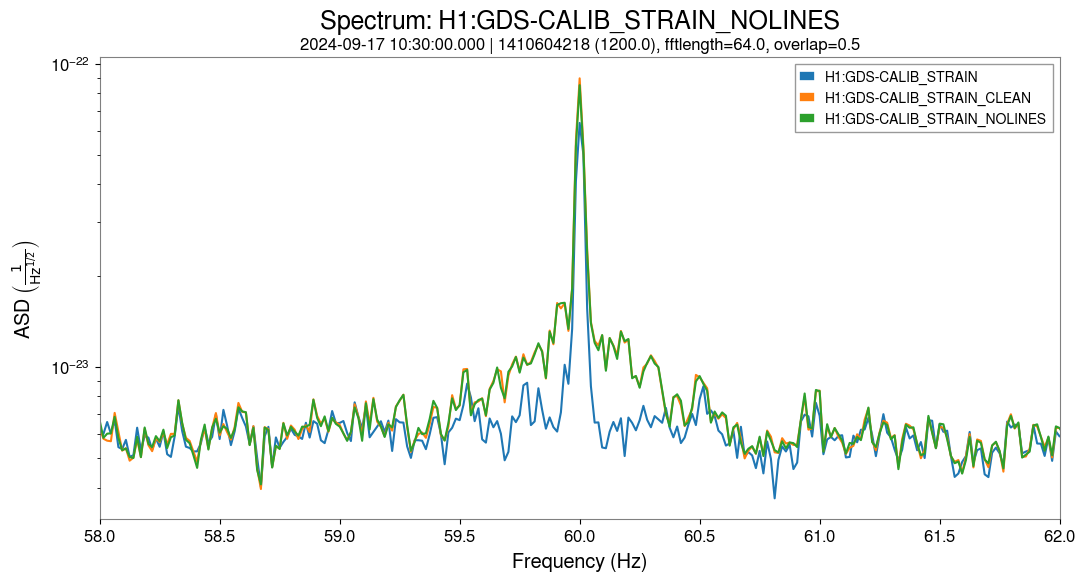 September 26:
September 26:
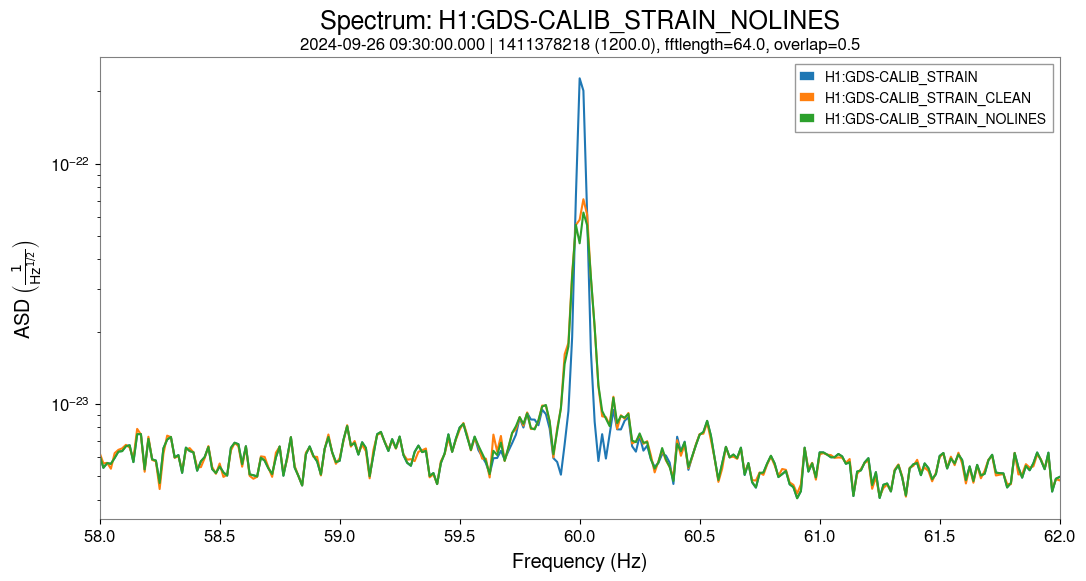 October 1st:
October 1st:
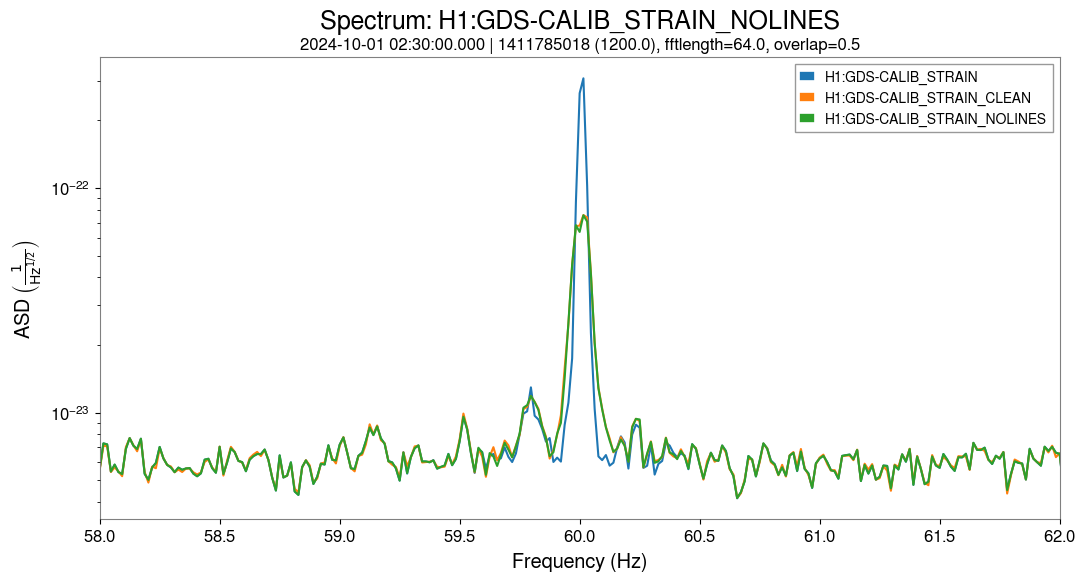 October 2nd:
October 2nd:
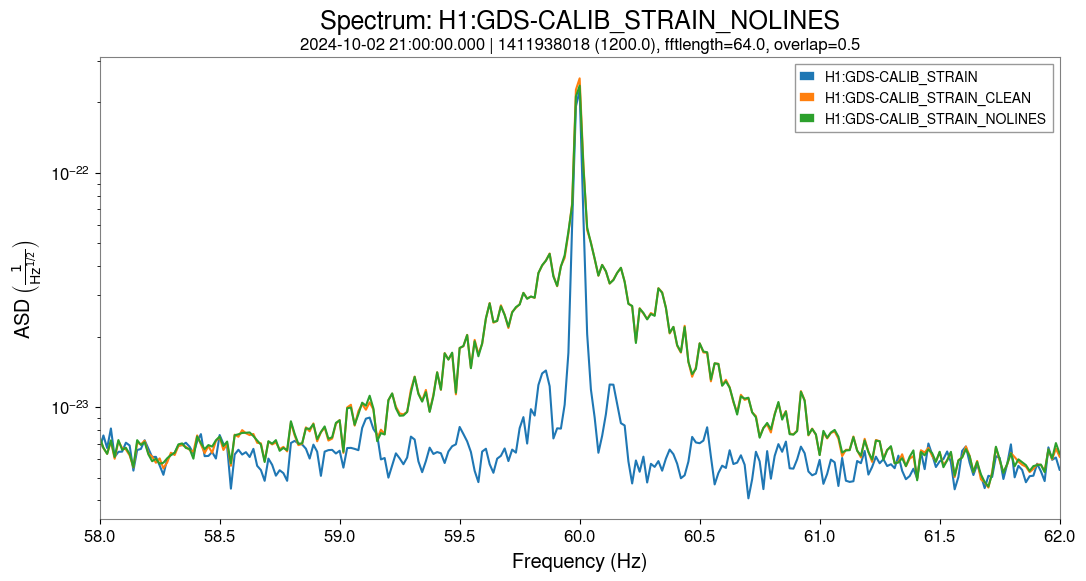 October 11th:
October 11th:
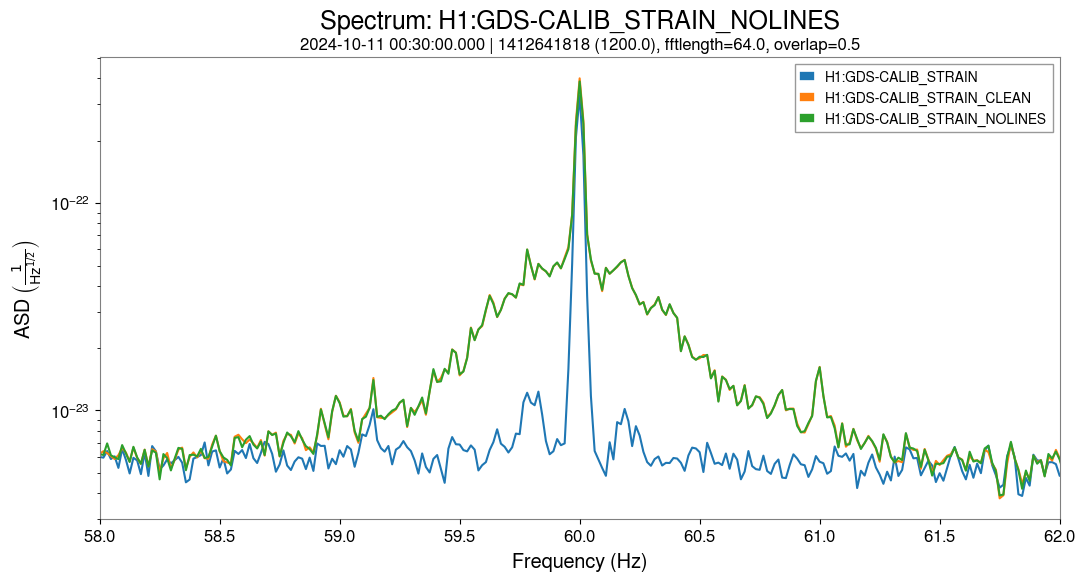







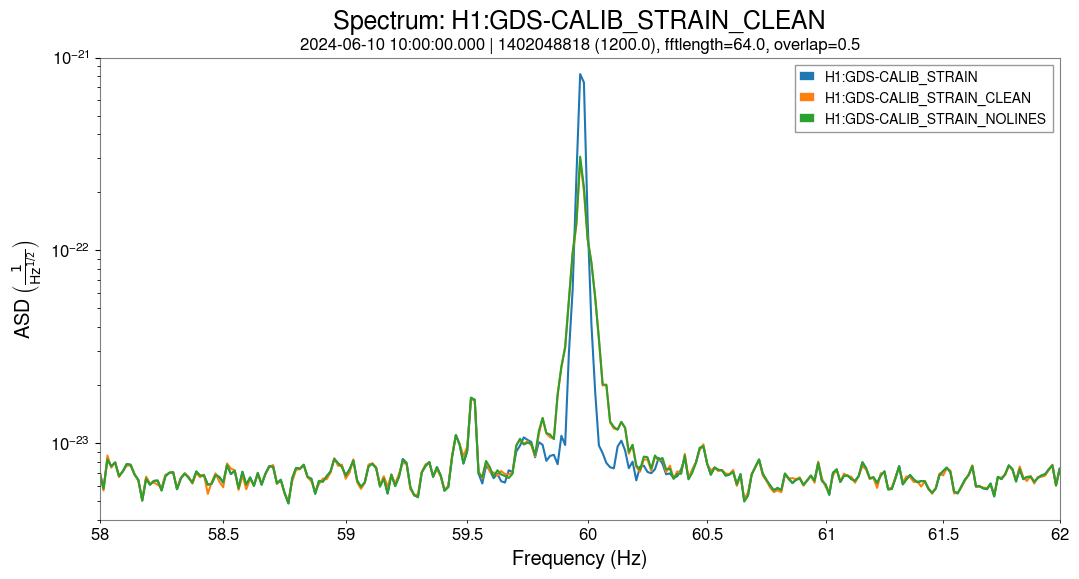






Next test:
Driver chassis power off, HV off, cable to chamber connected:
The DB25 controls cable was disconnected on the rear of the driver chassis. Cable comes form CER slow controls. Pin 14 has about 100 ohms to chamber ground.